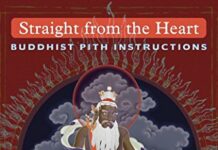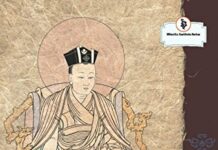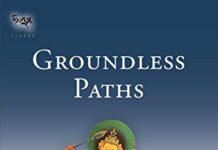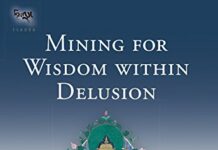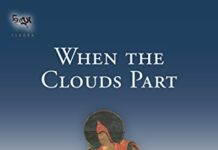
Ebook Info
- Published: 2011
- Number of pages: 937 pages
- Format: PDF
- File Size: 64.17 MB
- Authors: Karl Brunnholzl
Description
The Abhisamayalamkara summarizes all the topics in the vast body of the Prajnaparamita Sutras. Resembling a zip-file, it comes to life only through its Indian and Tibetan commentaries. Together, these texts not only discuss the “hidden meaning” of the Prajnaparamita Sutras—the paths and bhumis of sravakas, pratyekabuddhas, and bodhisattvas—but also serve as contemplative manuals for the explicit topic of these sutras—emptiness—and how it is to be understood on the progressive levels of realization of bodhisattvas. Thus these texts describe what happens in the mind of a bodhisattva who meditates on emptiness, making it a living experience from the beginner’s stage up through buddhahood. Gone Beyond contains the first in-depth study of the Abhisamayalamkara (the text studied most extensively in higher Tibetan Buddhist education) and its commentaries in the Kagyu School. This study (in two volumes) includes translations of Maitreya’s famous text and its commentary by the Fifth Shamarpa Goncho Yenla (the first translation ever of a complete commentary on the Abhisamayalamkara into English), which are supplemented by extensive excerpts from the commentaries by the Third, Seventh, and Eighth Karmapas and others. Thus it closes a long-standing gap in the modern scholarship on the Prajnaparamita Sutras and the literature on paths and bhumis in mahayana Buddhism. The first volume presents an English translation of the first three chapters of the Abhisamayalamkara and its commentary by the Fifth Shamarpa. The second volume presents an English translation of the final five chapters and its commentary by the Fifth Shamarpa.
User’s Reviews
Editorial Reviews: Review “Concise, pithy, and easy to understand. That it has been augmented with commentaries by the Seventh and Eighth Karmapas makes this a valuable volume indeed, one that will benefit many people. I am grateful that this book has been published.”—Thrangu Rinpoche, author of Medicine Buddha Teachings “Maitreya’s Ornament of Clear Realization, along with its commentaries, opens a window into the vast landscape of the Prajnaparamita Sutras territory that has been largely left unexplored by Western scholars and practitioners. . . . Karl Brunnhölzl’s breathtaking scholarship, lucid translations, and deep insight into the meaning of these texts brings this vast body of teachings to life. Gone Beyond is bound to be an invaluable reference work for scholars and practitioners for years to come.”—Andy Karr, author of Contemplating Reality “In a stimulating and accessible way, Karl Brunnhölzl’s Gone Beyond brings us into the vast and profound world of prajaparamita literature. In these two volumes of Gone Beyond (with a companion volume soon to follow), we discover the foundation of the Mahayana path in all its glory.”—Elizabeth Callahan, translator of The Treasury of Knowledge: Book Six, Part Three “These two volumes of Gone Beyond are a groundbreaking work and a great treasure for Western Buddhism.”—Dzogchen Ponlop Rinpoche, from the Foreword to Volume 1 “Prajnaparamita literature, which deals with the Mahayana doctrine of emptiness, is notoriously impenetrable, certainly not the sort of material that one can jump right into no matter how fine the translation. However, Brunnhölzl provides a masterful introduction that surveys the history of the text and its many Tibetan commentaries and makes sense of the complex subject matter.”—Buddhadharma: The Practitioners Quarterly About the Author Karl Brunnhölzl, MD, was trained as a physician and also studied Tibetology. He received his systematic training in Tibetan language and Buddhist philosophy and practice at the Marpa Institute for Translators, founded by Khenpo Tsultrim Gyamtso Rinpoche. Since 1989 he has been a translator and interpreter from Tibetan and English. He is presently involved with the Nitartha Institute as a teacher and translator.
Reviews from Amazon users which were colected at the time this book was published on the website:
⭐Gone Beyond is a two volume work on Abhisamayalamkara, the Ornament of Clear Realization, from the perspective of the Kagyu school of Tibetan Buddhist tradition.Abhisamayalamkara – one of the five dharmas of Maitreya – is an exposition of the hidden meaning of Prajñaparamita sutras, elucidating the states of mind of a bodhisattva while on the path to perfect buddhahood. Abhisamayalamkara is a description of a series of ever rarified clear realizations of emptiness, which is the explicit meaning of Prajñaparamita sutras. These clear realizations are an ornament which beautifies the body of Prajñaparamita; hence the “Ornament of Clear Realization.”Abhisamayalamkara is one of the five great treatises of the sutra tradition taught in the Kagyu shedras or monastic colleges. The definitive Kagyu commentary on Abhisamayalamkara was written by the 8th Karmapa, Mikyo Dorje, called “The Noble One’s resting at Ease.” Its abridgement, more practical as a shedra textbook, was written by the 5th Shamarpa Göncho Yenla.Regarding the layout of Gone Beyond, the main arch of the narrative is the translation of the 5th Shamarpa’s commentary in its entirety. This is accompanied by extensive excerpts from the 8th Karmapa’s (and partially 7th Karmapa’s) meaning commentary on all the main topics of discussion. The third layer of the book are very extensive endnotes (more than 1700 in just the first volume) which contain further long excerpts from 8th Karmapa’s commentary on the Abhisamayalamkara root verses as well as many other notes which are summaries of additional commentaries. Finally, there is an appendix with dozens of very helpful charts which correlate lists of categories of Buddhist philosophy taught in Prajñaparamita literature. The charts help facilitate quick understanding of ideas buried in the traditional narrative.The best way to proceed through this difficult yet rewarding material is to start with the concise commentary by the 5th Shamarpa. If the reader gets stuck by the conciseness of the presented material, it is time to venture out to at least some of the extensive excerpts of the 8th Karmapa’s meaning commentary. Then the footnotes can be read by the specialists or whenever the reader desires to explore a given section of the word commentary in more detail.Because of the sheer volume of the material laid out in this way, Gone Beyond was divided into two volumes. The first volume deals with the first three chapters of Abhisamayalamkara: The knowledge of all aspects (which is what is to be attained), the knowledge of the path (which is the means for attaining the knowledge of all aspects) and the knowledge of entities (which is the root of the knowledge of all aspects).The first volume has an extensive introductory section, where the author discuses Prajñaparamita sutras, Abhisamayalamkara and its Indian and Tibetan commentaries. This section includes two very provocative chapters called: “Is there any practical relevance to the Abhisamayalamkara” and “The Abhisamayalamkara as a contemplative manual”. Finally there is a detailed presentation of the views of the 8th Karmapa and the 5th Shamarpa as presented in their Abhisamayalamkara commentaries, finally shedding light, often surprising, on the simplistic categorizations of Mikyo Dorje’s view we have had access to so far.Last but not the least, I was fortunate that I could attend online courses on the Gone Beyond book taught by the teacher most qualified to teach them – the author himself, Khenpo Dr. Karl Brunnhölzl. It was only when I could listen to the MP3 files or watch Khenpo Karl’s presentations from a streaming video archive that I truly benefitted from these difficult teachings. These online courses are available in a self-paced manner from Nitartha Institute website, highly recommended for any student of this book.In short, I am recommending this book to any serious student/practitioner of Tibetan Buddhism, a student who is not satisfied with mere vague, general ideas about the spiritual path he or she is treading, a student who actually cares and wants to know what’s up there for you in terms of the states of mind to be cultivated in the journey to perfect buddhahood.
⭐Very good for learning and gaining knowledge.
⭐Perfect condition
⭐I am in the process of reading volume I. I like vol I a lot. This volume is set up the same way and I am sure I will get a great benefit from the text and the commentaries.
⭐Extremely comprehensive and profound discussion. Highly recommended but not a casual read!
⭐(some more details…)ContentsAn Aspiration by H.H. the Seventeenth Karmapa, Ogyen Trinley Dorje 13Foreword by H.H. the Seventeenth Karmapa, Ogyen Trinley Dorje 15Foreword by Dzogchen Ponlop Rinpoche 17Acknowledgments 19Introduction 21The prajñ’p’ramit’ s’tras 23The Abhisamay’la’k’ra and its commentaries 47What is the view of the Abhisamay’lamk’ra? 81The Abhisamay’la’k’ra in its traditional setting 93The place of the prajñ’p’ramit’ s’tras and the Abhisamay’lamk’ra in modern scholarship 107Is there any practical relevance to the Abhisamay’la’k’ra? 111The Abhisamay’la’k’ra as a contemplative manual 119Some remarks on the distinct exegetical approaches of the commentariesby the Eighth Karmapa and the Fifth Shamarpa 129Overview of the present three-volume study of commentaries on the AA 201Translation:A Concise El ucidat ion of the Abhisa may’la mk’ra (Topics One to Three)1 205Paying homage, which is the cause for other persons giving rise to openness for the fruitional mother 207The purpose and the connection, which are the causes for others giving rise to openness for this treatise 222The eight topics as what is to be explained 225The knowledge of all aspects (what is to be attained) 235The generation of bodhicitta (the motivation) 235The instructions that teach the means of practice 241The explanation of the branches of penetration (the result of practicing the instructions) 264The disposition as the foundation for the arising of practice 283The focal object of practice 292The aim of practice 296The armorlike practice in six sets of six 298The practice of ninefold engagement 301The practice of the seventeen equipments 309The practice of final deliverance 328The knowledge of the path (the means to attain the knowledge of all aspects) 331The causes of the knowledge of the path 331The manner of the knowledge of the path of ‘r’vakas 333The manner of the knowledge of the path of pratyekabuddhas 336The manner of the knowledge of the path of bodhisattvas 341The path of seeing 341The path of familiarization 345The function of the path of familiarization 345The path of familiarization as aspiration, which accumulates virtue 347Its benefit 348The path of familiarization as dedication, which makes virtue not going to waste 349The path of familiarization as rejoicing, which makes virtue increase 351The nature of the uninterrupted path–the path of familiarization as accomplishment 351The nature of the path of liberation–the pure path of familiarization 352The knowledge of entities (the root of the knowledge of all aspects, which includes the points to go astray) 357The nature of the knowledge of entities 362The reason for being close or distant 362The divisions of antagonistic factors and remedies 363The training (the engagement) 366The path of seeing (the fruition of engagement) 368Appendix I:Selected General Topics fr om JG and JNS 3711) The knowledge of all aspects 3712) The way in which the two realities become the objects of the wrong ideas of apprehending them as mutually exclusive 4093) The way in which the two realities are not mutually exclusive 4154) The qualms that are to be eliminated 4155) The reasoning that is the means for eliminating these qualms 4166) The manner of eliminating said qualms 416D) The path of preparation 4171) The four stages of the path of preparation 4172) The focal objects and aspects of the path of preparation 4203) The four conceptions in the context of the path of preparation 423E) The disposition 4281) General explanation 4282) The disposition is not a nonimplicative negation 4463) The single y’na and buddha nature in all beings 4474) Other commentaries on the disposition 454F) The focal object of practice 488G) The equipment of wisdom 4921) The nature of phenomena and wisdom in relation to being self-empty versus other-empty 4922) The explanation of emptiness (the object) and the way in which it is observed by wisdom (its subject) 4953) Various ways of asserting the definite number of emptinesses (including the wisdoms that correspond to the twenty emptinesses) 5014) The basis of emptiness 5055) The manner of being empty 5066) Nondual wisdom 508(………….)more, until page 678
⭐Be warned: You will really need to be a dedicated academic or scholar to get much out of this book. It’s not made for easy reading or digestible insight. I have no doubt it’s a very valuable resource for “pros” but for anyone wanting to get usable understanding, don’t think you are going to get it soon from these 900 plus pages. Three stars for lack of directness and usability, but would give it five for it’s thoroughness and depth. Just way, way too much to take in and not easy to navigate. I returned it.
⭐The self must be apprehended at all costs right till the end and, this end is the bliss of the uncontaminated tree.
⭐Excellent work and Introductory material on a complex subject.
⭐Page 198 summarises the essence of the middle way philosophy and the prajnaparamita sutras, the rest of the book will take some thought. Thank you.
⭐Gone Beyond contains the first in-depth study the Abhisamayalamkara (the text studied most extensively in higher Tibetan Buddhist education) and its commentaries in the Kagyu School. This study (in two volumes) includes translations of Maitreya’s famous text and its commentary by the Fifth Shamarpa, Goncho Yenla (the first translation ever of a complete commentary on the Abhisamayalamkara into English), which are supplemented by extensive excerpts from the commentaries by the Third, Seventh, and Eighth Karmapas and others. Thus, it closes a long-standing gap in the modern scholarship on the Prajnaparamita Sutras and the literature on paths and bhumis in mahayana Buddhism.The first volume presents an English translation of the first three chapters of the Abhisamayalamkara and its commentary by the Fifth Shamarpa.The second volume presents an English translation of the final five chapters and its commentary by the Fifth Shamarpa.Karl Brunnhölzl was trained as a physician and presently works as a Tibetan translator and Buddhist teacher. He studied Tibetology, Buddhology, and Sanskrit at Hamburg University and Tibetan language and Buddhist philosophy and practice the Marpa Institute for Translators in Kathmandu. Currently he works as a translator and interpreter for the Tsadra Foundation, Nalandabodhi, and the Nitartha Institute. In 2009 he was appointed as the first Western khenpo (abbot in the Kagyu and Nyingma lineages) by Dzogchen Ponlop Rinpoche. He is the author and translator of The Center of the Sunlit Sky (2004), the first in-depth study of the Kagyu interpretation of Madhyamaka in a Western language; Straight from the Heart (2007), an anthology of Buddhist pith instructions; Nagarjuna’s In Praise of Dharmadhatu (2007) with commentary by the Third Karmapa; and Luminous Heart (2009), the Third Karmapa on buddha nature, consciousness, and wisdom.
Keywords
Free Download Gone Beyond (Volume 1): The Prajnaparamita Sutras, The Ornament of Clear Realization, and Its Commentaries in the Tibetan Kagyu Tradition in PDF format
Gone Beyond (Volume 1): The Prajnaparamita Sutras, The Ornament of Clear Realization, and Its Commentaries in the Tibetan Kagyu Tradition PDF Free Download
Download Gone Beyond (Volume 1): The Prajnaparamita Sutras, The Ornament of Clear Realization, and Its Commentaries in the Tibetan Kagyu Tradition 2011 PDF Free
Gone Beyond (Volume 1): The Prajnaparamita Sutras, The Ornament of Clear Realization, and Its Commentaries in the Tibetan Kagyu Tradition 2011 PDF Free Download
Download Gone Beyond (Volume 1): The Prajnaparamita Sutras, The Ornament of Clear Realization, and Its Commentaries in the Tibetan Kagyu Tradition PDF
Free Download Ebook Gone Beyond (Volume 1): The Prajnaparamita Sutras, The Ornament of Clear Realization, and Its Commentaries in the Tibetan Kagyu Tradition
